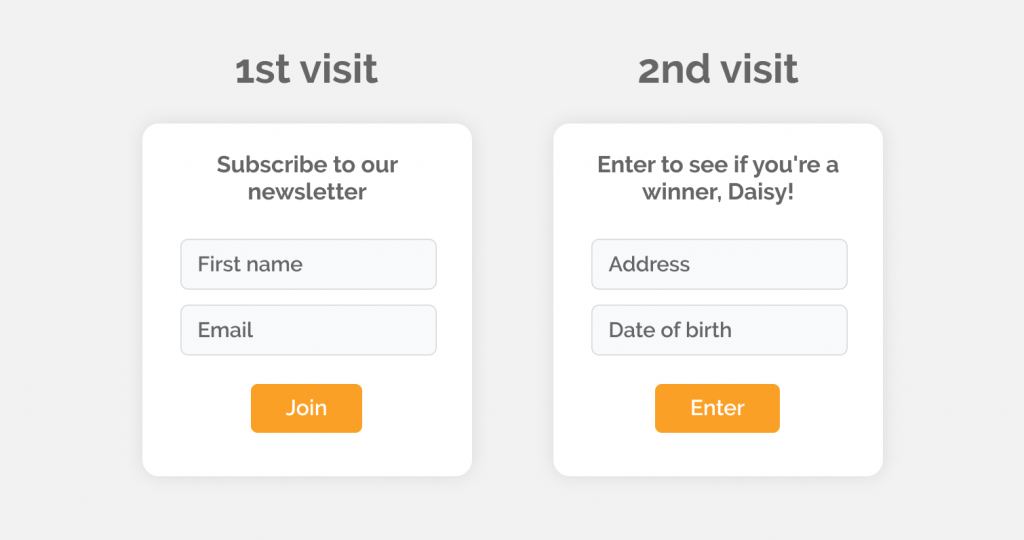10 Strategies to Consider When Using Marketing Tech in 2024
In a world where innovation is the captain, professionals grapple with the challenges of staying ahead. The marketing tech revolution is like a mighty wind, propelling businesses forward.
Still, for many, it’s a daunting storm of change. There are some pros and cons to using it. The question isn’t whether to ride the wave but how to ride it effectively without being swept away.
In this article, we will provide you with a list of strategies to consider when using marketing tech in 2024. Let’s get started.
The Evolving Landscape of Marketing Technologies: A Shifting Horizon
Imagine your marketing strategies as a fleet of ships, each equipped with the latest navigation tools to conquer uncharted seas. This analogy mirrors the contemporary marketing scene where technologies are the compasses and maps guiding businesses through a vast digital ocean.
Yet, this sea is constantly changing, with new islands of innovation emerging and old ones sinking into obsolescence. To stay ahead, professionals must understand the landscape’s fluidity and anticipate the winds of change.
Innovative marketing tools emerge as beacons in this dynamic environment, illuminating the path forward. Automation and analytics have become sturdy ships navigating the tumultuous data and consumer behavior waves.
The challenge lies in adopting these tools and understanding which ones align with your journey.
Innovative Marketing Tools: Sailing into Automation and Analytics
Automation has become a reliable crew member, taking over repetitive tasks and freeing human resources for more strategic endeavors. From email campaigns to social media posts, the efficiency brought by automation is akin to having a team of tireless sailors who never need rest.
The statistics tell a tale of increased productivity and reduced human error. Studies show that businesses using marketing automation to nurture leads experience a whopping 451% increase in qualified leads.
Analytics, on the other hand, acts as the navigator, providing insights into the waters ahead. Understanding customer behavior, preferences, and the impact of marketing efforts becomes not just a luxury but a necessity.
According to recent surveys, companies leveraging analytics are five times more likely to make faster decisions than their counterparts. It’s like having a real-time weather report for your marketing journey, helping you adjust your sails before the storm hits.
Strategies for Evaluating and Adopting New Marketing Tech
Like any seasoned navigator, professionals need effective strategies to evaluate and adopt these technologies. It’s not just about picking the shiniest tool but understanding how it fits into your fleet.
Case studies become treasure maps, guiding you through the success stories of others who ventured into these waters before you.
Here, the statistics take on the role of seasoned sailors, offering wisdom from their journeys. Research indicates that 91% of successful marketers believe that marketing automation is “very important” to the overall success of their marketing across channels.
These are the captains who have seen the value of innovative tools firsthand and have reaped the rewards.
Evaluating and adopting new marketing technologies is a crucial process that requires careful consideration and strategic planning. Here are some of the best strategies for effectively navigating this terrain:
1. Understand Your Business Needs
- Assessment of Current Processes: thoroughly understand your current marketing processes before adopting new technology. Identify pain points, areas for improvement, and the goals you aim to achieve.
- Define Objectives and Goals: Clearly outline your marketing objectives and goals. Whether increasing lead generation, improving customer engagement, or streamlining workflows, having defined plans will guide your technology choices.
2. Conduct Thorough Research
- Market Research: Stay informed about the latest marketing technologies in your industry. Understand emerging trends, customer expectations, and how your competitors leverage technology.
- Vendor Evaluation: Research potential vendors thoroughly. Consider factors such as reputation, customer reviews, and case studies. Look for a vendor with a track record of success and positive customer experiences.
3. Align with Your Strategy
- Integration with Existing Stack: Ensure the new technology seamlessly integrates with your existing marketing stack. Compatibility is crucial in avoiding silos and maximizing the efficiency of your overall system.
- Scalability: Choose technologies that can scale with your business. Consider future growth and whether the technology can accommodate an expanding user base or increased data volumes.
4. Trial and Testing
- Pilot Programs: Consider running pilot programs to test the effectiveness of the technology in a controlled environment. This allows you to assess its impact on your specific business processes.
- Free Trials: Take advantage of free trial offers. Many technology providers offer trial periods, allowing you to explore the features and functionality before committing.
5. Cost-Benefit Analysis
- Total Cost of Ownership (TCO): Beyond the initial cost, evaluate the total cost of ownership, including implementation, training, and ongoing maintenance. Ensure that the technology provides long-term value for your investment.
- ROI Projections: Project the potential return on investment (ROI). Calculate how the technology can contribute to revenue growth, cost savings, or efficiency improvements.
6. User Training and Adoption
- User-Friendly Interface: Choose technologies with user-friendly interfaces to facilitate quicker adoption by your team. A complicated interface can lead to resistance and hinder successful implementation.
- Training Programs: Develop comprehensive training programs for your team. Ensure they are well-versed in using the new technology to maximize its potential.
7. Security and Compliance
- Data Security: Prioritize technologies that adhere to robust security standards. Ensure customer data is handled securely, mainly if you operate in industries with specific compliance requirements.
- Compliance Check: Verify that the technology complies with relevant regulations, such as GDPR, HIPAA, or industry-specific standards.
8. Seek Expert Advice
- Consult Industry Experts: Engage with industry experts or consultants who can provide insights and recommendations based on your specific needs. They can offer valuable perspectives and help you make informed decisions.
- Network and Peer Discussions: Attend industry events, webinars, or join forums where professionals discuss their experiences with different marketing technologies. Learn from the successes and challenges of your peers.
9. Continuous Evaluation and Adaptation
- Feedback Loops: Establish feedback loops to gather user insights. Regularly assess the technology’s performance and gather feedback on its usability and impact.
- Agile Approach: Adopt an agile approach to technology adoption. Be willing to adapt and adjust based on evolving business needs and technological advancements.
10. Measure and Analyze
- Key Performance Indicators (KPIs): Define KPIs aligned with your objectives. Regularly measure and analyze the impact of the technology on these KPIs to ensure that it’s delivering the expected results.
- Data-Driven Decision Making: Leverage the analytics capabilities of the technology to make data-driven decisions. Analyze performance data to refine strategies and optimize marketing efforts.
By following these strategies, businesses can navigate the complex landscape of marketing technologies with a clear focus on their goals, user needs, and long-term success.
Remember that the evaluation and adoption process is iterative, and continuous refinement is critical to staying ahead in the dynamic marketing technology field.
CRM’s Role in Integrating and Optimizing Marketing Technologies
Amidst this sea of innovation, a CRM system emerges as the ship’s helm, steering and orchestrating the entire fleet. CRM systems seamlessly integrate with various marketing technologies, providing a unified command center.
You are no longer managing tools and platforms separately. With CRM, it’s a synchronized dance, each technology moving in harmony.
Consider CRM as the compass that keeps your fleet on course. Research indicates that 74% of businesses using CRM report improved customer relationships.
CRM ensures that your automated marketing campaigns align with customer data, analytics inform your decisions, and the entire fleet moves cohesively toward your goals.
Conclusion
The marketing tech revolution isn’t a storm to weather but a wind to harness. The evolving landscape is an ocean of opportunities, and with innovative tools, strategic adoption, and CRM as your guiding star, you not only navigate the waves but conquer them, setting sail for new horizons.
Learn more about CRM systems and how you can use them for your business. Talk to our CRM experts. Book a FREE consultation and demo below.
Curious how digital ecosystems can help improve your business?
Check out how digital ecosystems can boost your company performance by getting started here.
Book a Demo



